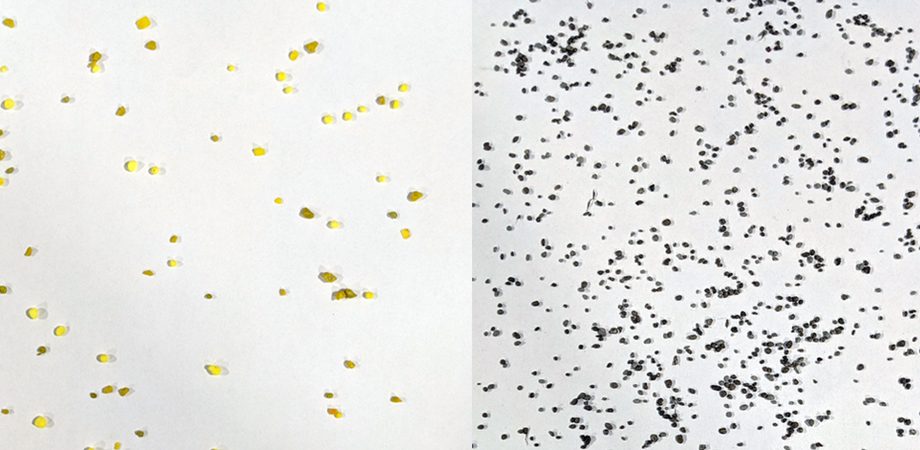Particle Distribution in Fertilizer: Why It’s Really Important.
Size Matters

Do you think about what is in the bag of fertilizer before purchasing and applying? The analysis and information are confirmation of what is in the bag. But how it’s put in that bag can be very important. A bag of 30-0-4 contains 30% nitrogen and 4% potassium. Is the 15 pounds of nitrogen in one chunk or divided into thousands and thousands of smaller prills? Hopefully the latter is true. You can imagine the application accuracy if there were a handful of large pieces of nitrogen in the bag. . .We don’t season our favorite grill item with whole peppercorns; we grind them for better coverage.
Granular products typically have a SGN (Size Guide Number) assigned to them. The smaller the number, the smaller the particle. SGN is the particle size measured in millimeters, multiplied by 100. For example, let’s compare applications with 100 SGN and 200 SGN products. Particles with 200 SGN will weigh more than twice that of the 100 SGN particles. If the target of your product application is 4 pounds per thousand square feet, you would be applying over twice as many fertilizer granules with the 100 SGN product as you would with the 200 SGN product. Particle distribution density would be much higher (particles or fertilizer prills per square foot) with the lower SGN product. Taking it a step further, think about how those particles “meltdown”, incorporate into the soil, or in a weed and feed scenario, contact the leaf blade of a target weed. In most scenarios, the more fertilizer prills, the better coverage, and application.
Lower SGN products are traditionally used in higher maintenance turf, such as golf and sports turf, and are usually much more expensive. Why am I telling you this? Think about particle distribution when applying granular pesticides on a fertilizer carrier. By doing simple math, you could use any formulation of Prodiamine or Dimension to apply your specific target amount of pre-emergent to the turf. When using a .20% Prodiamine product at 4 pounds per thousand, the equivalent AI application of a .40% Prodiamine product would be cut in half, or 2 pounds to apply. But how even, consistent, or uniform is the 2 lbs. of product as compared to the 4 lbs. distributed in a given area?
We are fortunate that pre-emergent season has now passed for the most part but think about these concepts for products like weed and feed or grub control materials going forward. Is putting down a .25% Merit product really doing a better job than applying a .20% Merit product? Is the insecticide being dispersed properly in your application area to give you the best grub protection possible? You will use fewer pounds of bagged product with a .25% Merit to achieve the same active ingredient application, but the granules per square foot (particle distribution) will be quite different.
Many overlook some of the nuances discussed above when choosing a granular material. Advanced Turf Solutions reps are here to help you understand what is in the bag. Feel free to contact your ATS rep should you have any questions or need help selecting the best product for your particular situation. Consider grinding your peppercorns when it makes sense.
Ryan Benson
Advanced Turf Solutions Sales Rep







